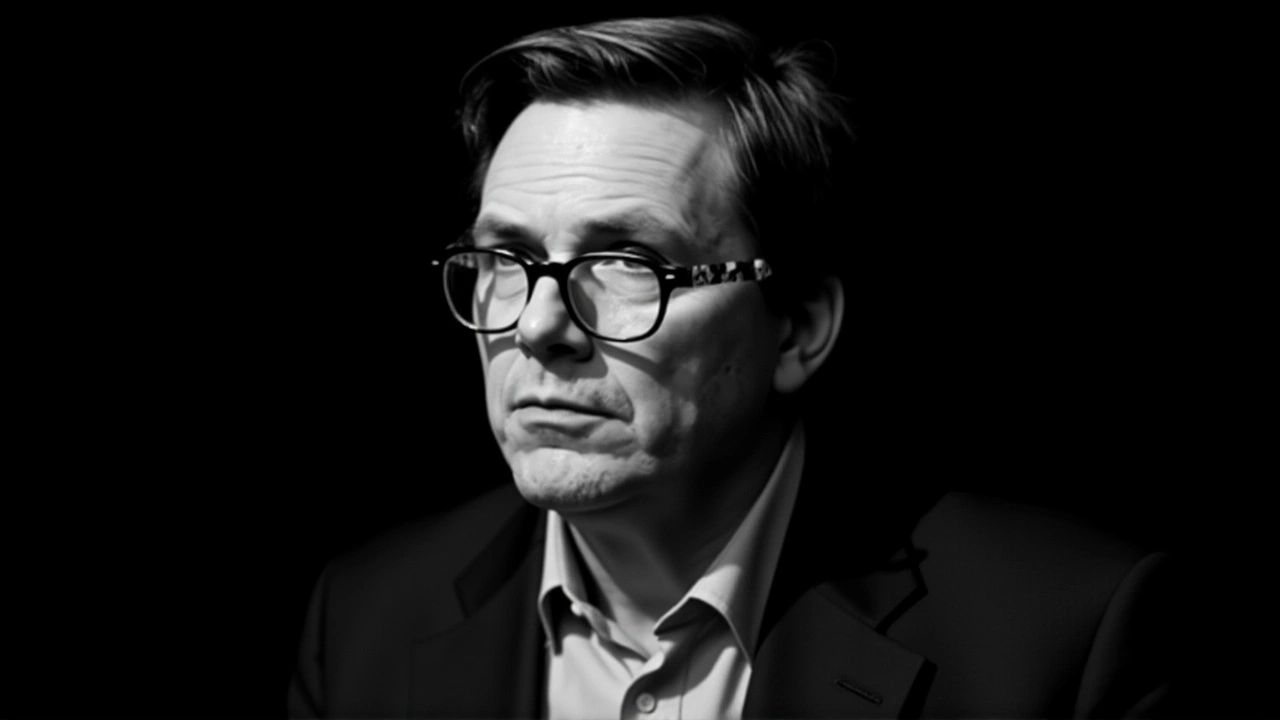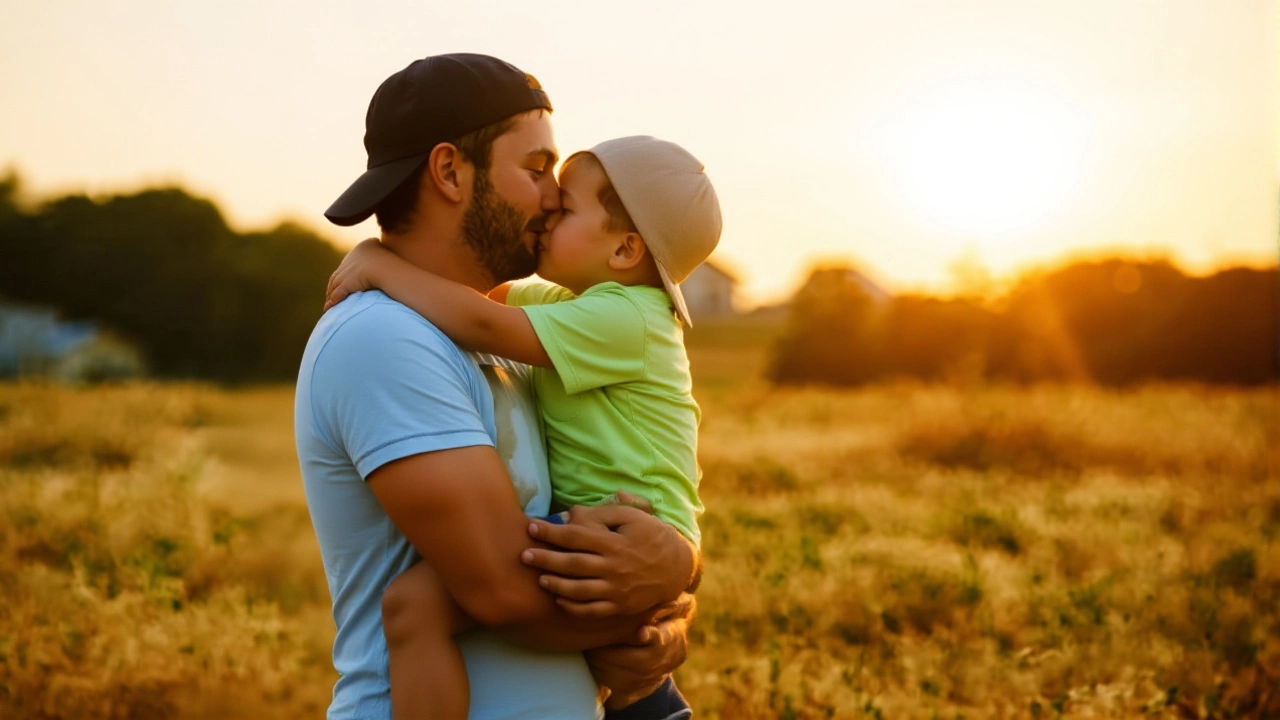On Wednesday, November 19, 2025, more than 80 countries will observe International Men's Day under the global theme 'Celebrating Men and Boys', with a landmark nine-hour live webcast streaming from Sydney as the central hub. Organized by the International Men's Day Coordination Committee, the event aims to spotlight the often-overlooked struggles and contributions of men and boys — from fatherhood and workplace pressures to the silent crisis of male suicide. The webcast, running from 3:00 PM to midnight AEDT, will feature voices from six continents, including psychologists, educators, athletes, and survivors of mental health crises. It’s not just a broadcast — it’s a movement, designed to break the silence that’s cost too many lives.
Why November 19? A Day Built on Intention
The date wasn’t chosen randomly. November 19 was selected to immediately precede International Children's Day on November 20, creating a deliberate bridge between generations. As the official site explains, it’s about honoring the role men play — as fathers, uncles, mentors, coaches — in shaping young lives. This connection isn’t symbolic; it’s strategic. Research from the World Health Organization shows that boys raised in households with emotionally present male figures are 40% less likely to develop depression by age 18. The timing forces a conversation: How do we raise boys to be strong without being silent? How do we support men so they can, in turn, support the next generation?The Six Pillars Behind the Movement
International Men’s Day isn’t a single-issue campaign. It’s anchored in six enduring pillars, consistently upheld by organizations from Trinidad and Tobago to Australia. First: promoting positive male role models beyond celebrities — teachers, nurses, single dads, retirees volunteering at youth centers. Second: celebrating men’s contributions to family, caregiving, and environmental stewardship — roles often erased from mainstream narratives. Third: confronting the stigma around men’s physical, mental, and emotional health. Fourth: exposing systemic discrimination — from custody bias to underfunded men’s health services. Fifth: improving gender relations by rejecting zero-sum thinking. And sixth: building a world where every boy can thrive without fear of being called weak.These aren’t abstract ideals. In the UK, schools are piloting programs where male mentors visit classrooms weekly to talk about vulnerability. In Canada, public transit ads now feature men saying, “I cried when my son was born — and I’m not ashamed.” These are small steps. But they’re steps in a direction that’s been blocked for decades.
Regional Nuances: Celebrating vs. Supporting
While the global theme is “Celebrating Men and Boys,” regional variations reflect local needs. Australia and the UK, both grappling with alarmingly high male suicide rates — 75% of all suicides in the UK are male — have adopted the parallel theme “Supporting Men and Boys.” The International Men's Day Coordination Committee doesn’t mandate uniformity; it encourages adaptation. In India, where Jagran Josh and Times of India report widespread outreach in rural communities, the focus is on dismantling the myth that “real men don’t ask for help.” In the U.S., veteran organizations are partnering with mental health nonprofits to reach former service members, who are 1.5 times more likely to die by suicide than civilians.
A Legacy Rooted in One Man’s Conviction
The modern movement traces back to Dr. Jerome Teelucksingh, a urologist and lecturer at the University of the West Indies in Trinidad and Tobago. In 1999, he launched the first official observance after years of frustration watching male patients suffer in silence — not because they didn’t care about their health, but because they believed seeking help was a sign of failure. “I didn’t want to create a day of complaints,” he told NDTV in a 2021 interview. “I wanted a day of recognition. Men give their strength every day. Let’s give them permission to be human.” His initiative, once dismissed as niche, now spans 80+ nations.The Zero Male Suicide Campaign: A Lifeline in Numbers
One of the most urgent initiatives tied to 2025’s observance is the global “Zero Male Suicide” campaign. In Australia alone, over 2,600 men died by suicide in 2023 — that’s seven every day. In the U.S., the CDC reports that men account for nearly 80% of all suicide deaths, despite making up only 49% of the population. The campaign doesn’t just urge awareness — it pushes for policy changes: better funding for men’s crisis centers, mandatory mental health training for GPs, and workplace programs that normalize talking about stress. “We’re not asking men to be stronger,” says Dr. Liam Carter, a clinical psychologist in Melbourne. “We’re asking society to stop demanding they be invincible.”
Not Against Women’s Day — For Balance
There’s still confusion. Some assume International Men’s Day is a reaction to International Women’s Day. It’s not. As Times of India clarified in 2024: “Both days work toward the shared goal of equality.” Women’s Day highlights systemic barriers women face. Men’s Day highlights the emotional, social, and institutional traps men are caught in — from toxic expectations of stoicism to legal systems that assume fathers are secondary caregivers. The goal isn’t competition. It’s completeness.What’s Next? Beyond the Webcast
The Sydney webcast is just the start. Post-event, the Coordination Committee plans to release a global report on male well-being metrics, comparing access to mental health services, paternity leave policies, and male life expectancy across 50 countries. Schools in Germany and Japan are already drafting curriculum modules based on the day’s pillars. And in rural Kenya, community elders are organizing storytelling circles where men share their childhoods — not as warriors, but as boys who were afraid, confused, or lonely.Change doesn’t happen in headlines. It happens in quiet conversations. In a father finally saying, “I’m not okay.” In a teacher noticing a boy who’s stopped smiling. In a society that learns to listen.
Frequently Asked Questions
Why is International Men's Day focused on men and boys when gender equality is the goal?
Gender equality requires addressing the unique challenges each gender faces. While women’s rights movements have historically tackled systemic discrimination, men face distinct pressures — like stigma around emotional expression, higher suicide rates, and societal expectations to be providers. International Men’s Day doesn’t diminish women’s struggles; it fills a gap in the conversation, ensuring both sides are seen and supported.
What is the significance of the nine-hour webcast from Sydney?
The nine-hour broadcast, timed to cover 24 global time zones, ensures real-time participation from every continent. It’s not just a lecture — it’s a live dialogue. Viewers in Nairobi can hear from a father in Chicago, a veteran in Belfast, and a teacher in Jakarta. This structure mirrors the global nature of the crisis and the solution: no country has all the answers, but every country has a story worth sharing.
How does the 'Zero Male Suicide' campaign translate into real-world action?
The campaign pushes for concrete policy changes: training for first responders, funding for male-specific crisis lines (like the UK’s Men’s Line), and mandatory mental health screenings in workplaces and schools. In Australia, pilot programs have reduced suicide ideation among young men by 31% in six months by simply creating safe spaces to talk — no therapy required, just presence and listening.
Who is Dr. Jerome Teelucksingh, and why does his role matter?
Dr. Jerome Teelucksingh, a Trinidadian urologist, launched the first official International Men’s Day in 1999 after witnessing how cultural norms prevented male patients from seeking help. His background in medicine gave him insight into the physical toll of emotional suppression. He didn’t start a protest — he started a movement rooted in compassion, proving that change begins when someone with authority says, “It’s okay to not be okay.”
Why do some countries use 'Supporting Men and Boys' instead of 'Celebrating Men and Boys'?
Countries like Australia and the UK face crisis-level male suicide rates and are prioritizing intervention over celebration. “Celebrating” implies progress has been made; “Supporting” acknowledges the work ahead. It’s not a contradiction — it’s context. The global theme unites, while regional adaptations respond to urgency. Both are valid, and both are needed.
How can individuals participate beyond November 19?
Start small: check in on the men in your life — not with “You good?” but with “I’ve noticed you’ve been quiet. Want to talk?” Support local men’s groups, donate to crisis lines, or advocate for mental health training in schools and workplaces. The movement grows one conversation at a time. You don’t need a platform — just presence.
